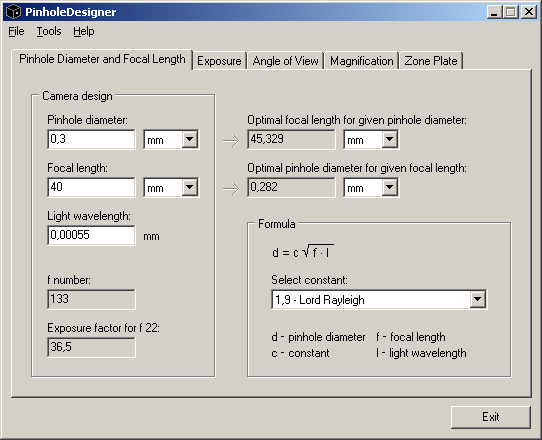Pinhole Designer For Mac
I used an old Mac SE for this project. To crack the case, there are just a few screws to pull. They are torx screws, If you do not have a torx screwdriver, a flathead will work. Once the screws are removed, the front pulls off easily. Just get your fingernails along the crack and pull. Really, it is not that hard to do.
Once you have the case open, remove all the electronics and discard. You will have to look for screws.
Be careful of the monitor, sometimes high voltages can zap you! Wear a long sleeve shirt in case the monitor breaks. Don't worry too much, just be careful. I created a pinhole lens using a piece of aluminum flashing and an old lens cap. Drill a large hole into the lens cap.

Cut a piece of flashing so that it will fit into the lens cap. Look carefully at the picture. The lens cap is epoxied on the front of the matteboard for a clean look. Also create a lens cap (cover) to use as a shutter. I just used a circular piece of matteboard and some blue masking tape. To make a pinhole in the flashing.
Use a #7 or 8 needle (or any other really small diameter needle and stick the back end of it into the eraser of a pencil. Now you can use the pencil (with the needle) to carefully drill a hole into the flashing.
The object here is to make as clean a hole as possible. Drill until the needle just barely pokes through the aluminum. Then use some 800 grit sandpaper to sand the rough edges around the hole down. Then flip the aluminum over and drill the other side. Sand the rough edges around the hole.
Eventually, the needle will be completely through the flashing and the hole will be perfectly smooth. If you put the flashing down on a scanner, you can blow up the image and see that a perfect circle has been formed. There are many internet resources on how to create a pinhole for a pinhole camera. Carry your camera outside and set up your picture. When you are ready, remove your lens cap and time your exposure for 60 seconds. I have found that 60 seconds is about right, but you may need to experiment. Recover your lens and take the whole contraption to your darkroom.
Develop your paper as usual. The photo comes out as a negative. I dropped the photo on a scanner and inverted it with Photoshop. Alternatively, you could sandwich the pic on another piece of photo paper and hit it with an enlarger light and then develop. I have not done this, but my friend, the photography teacher, says it works!
This is a picture of me, in front of my camera. In the background is an oatmeal box camera also taking a picture of me. David Miller took this picture with a digital point and shoot camera. You can see him in the background of the oatmeal camera shot. The Apple II had color output (16 colors).
Pinhole Designer For Mac Free
The green screens were simply popular monochrome monitors at the time. Green was supposed to be easier on the eye and green phosphor tends to be slower (retains the light longer) making the screens less jittery at 50 or 60Hz refresh rate.
This is also why oscilloscopes tend to have green screens. I paid extra for an amber screen for my Apple II, considering it more confortable than green. The Apple II came out in 1976 (Apple incorporated officially on April 1, 1976), but at the time only b/w or color 'TV Monitors' were available and were very expensive (no green or amber yet). My first monitor was a b/w TV that I had removed the tuner and sound filter according to instructions from Don Lancaster's fabulous book 'The TV Typewriter Cookbook.' The IBM PC was introduced in 1981 at the heals of the Apple III (1980) and five years after the Apple II.